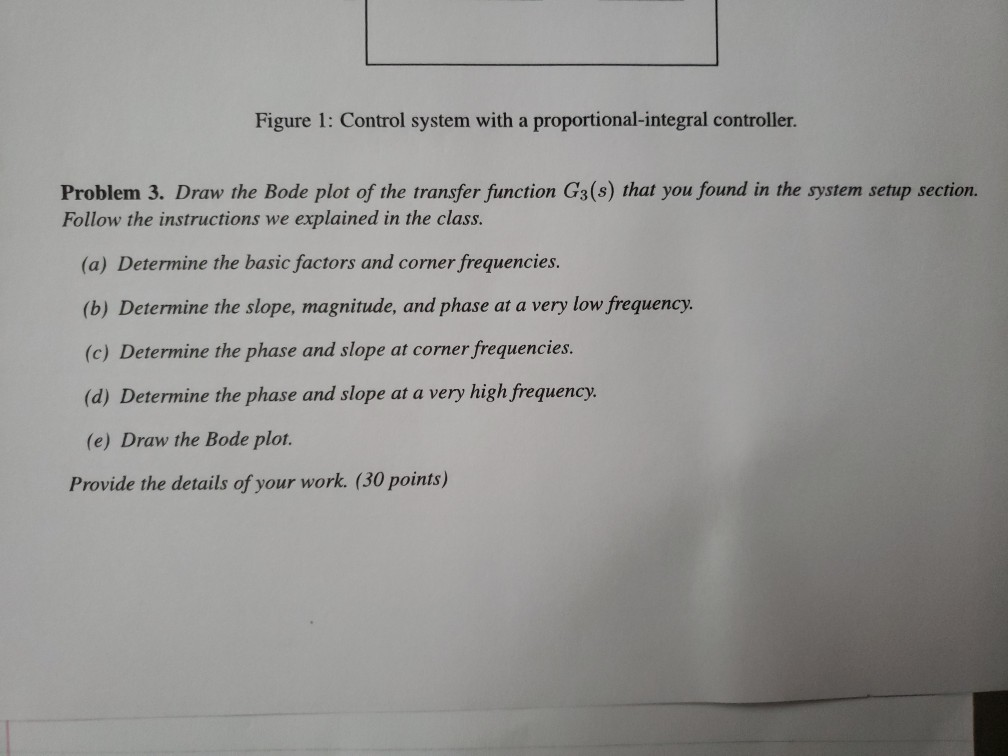Answered step by step
Verified Expert Solution
Question
1 Approved Answer
106 s + a1 + a3 G3(s) = 100 (start as) (3+15(x + a)s + 100an + a.)) (s +100(a1 + a)) 100 (5+6+1) (571562+7)s


106 s + a1 + a3 G3(s) = 100 (start as) (3+15(x + a)s + 100an + a.)) (s +100(a1 + a)) 100 (5+6+1) (571562+7)s +10c) (+100(e) ) Figure 1: Control system with a proportional-integral controller. Problem 3. Draw the Bode plot of the transfer function G3(s) that you found in the system setup section. Follow the instructions we explained in the class. (a) Determine the basic factors and corner frequencies. (b) Determine the slope, magnitude, and phase at a very low frequency. (c) Determine the phase and slope at corner frequencies. (d) Determine the phase and slope at a very high frequency. (e) Draw the Bode plot. Provide the details of your work. (30 points) 106 s + a1 + a3 G3(s) = 100 (start as) (3+15(x + a)s + 100an + a.)) (s +100(a1 + a)) 100 (5+6+1) (571562+7)s +10c) (+100(e) ) Figure 1: Control system with a proportional-integral controller. Problem 3. Draw the Bode plot of the transfer function G3(s) that you found in the system setup section. Follow the instructions we explained in the class. (a) Determine the basic factors and corner frequencies. (b) Determine the slope, magnitude, and phase at a very low frequency. (c) Determine the phase and slope at corner frequencies. (d) Determine the phase and slope at a very high frequency. (e) Draw the Bode plot. Provide the details of your work. (30 points)
Step by Step Solution
There are 3 Steps involved in it
Step: 1

Get Instant Access to Expert-Tailored Solutions
See step-by-step solutions with expert insights and AI powered tools for academic success
Step: 2

Step: 3

Ace Your Homework with AI
Get the answers you need in no time with our AI-driven, step-by-step assistance
Get Started


